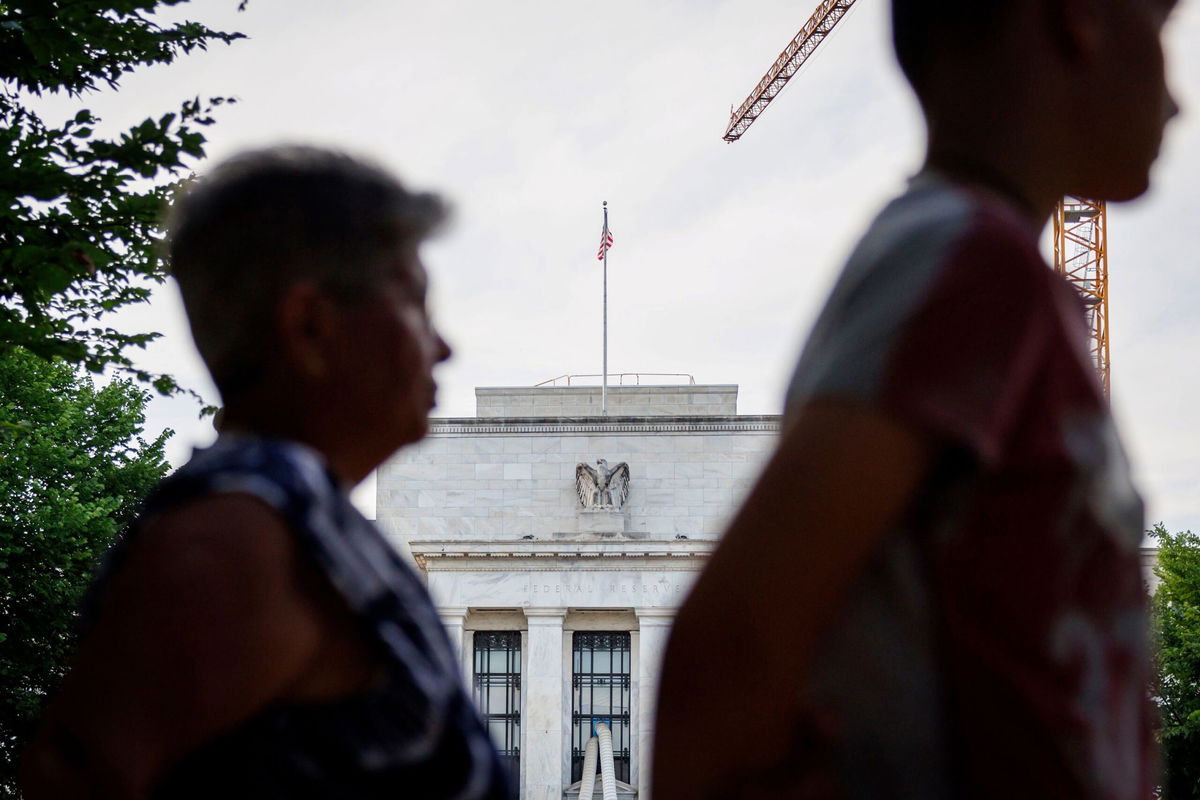Trump is about to test whether the Fed learned its inflation lesson

The Marriner S. Eccles Federal Reserve building in Washington
Washington (CNN) — The Federal Reserve admits it badly misjudged the beginning of the inflation crisis, but officials hope they won’t make the same mistake again. President Donald Trump’s tariffs are about to determine whether America’s central bank is up for the challenge.
In 2021, as the US economy recovered from the pandemic, consumer prices began to creep higher. Fed officials said then that rising inflation would only be “transitory.”
Notoriously, that proved to not be the case, and, by the spring of 2022, the Fed was in the throes of its most aggressive rate-hiking campaign since the 1980s.
Inflation has improved considerably since then, but the Fed still gets flak for being so wrong in 2021.
Now the Fed is working on a new “policy framework,” including lessons from its mistaken bet that high inflation would be just a blip. And while that framework needs to work for future crises, it’s especially urgent at the moment — given the chaos and confusion already spurred this year by President Donald Trump’s sweeping economic agenda, centered on tariffs, tax cuts and deregulation.
“I think it’s a fair criticism that we could have acted earlier,” James Bullard, who served as president of the Federal Reserve Bank of St. Louis from 2008 to 2023, told CNN in an interview late last year. “But you’re never going to be totally certain in macroeconomics about what’s going to happen next and this is the world we’ve always lived in.”
Sen. Elizabeth Warren of Massachusetts, a reliable critic of the Fed, was blunter during Chair Jerome Powell’s February semiannual update on monetary policy: “It’s now clear that the Fed acted too late and let inflation get too high, and then responded by keeping rates too high for too long.”
How did the Fed get it wrong?
The pandemic triggered a sharp, two-month recession, with double-digit unemployment. In the previous downturn, during the 2007-2009 Great Recession, the labor market was slow to recover.
The Covid recession, hitting before prices started to jump, kept the Fed focused on promoting job growth, rather than wrangling inflation. After all, runaway prices hadn’t been a problem in decades.
“The 2020 framework put more emphasis on full employment,” said Laurence Ball, an economics professor at Johns Hopkins University who researches monetary policy.
But back then, economists were convinced that inflation would quickly fall down to earth.
“The good ship Transitory was a crowded one,” Powell said last year in his keynote speech at the Kansas City Fed’s Jackson Hole Economic Symposium.
Kristin Forbes, an economist at the Massachusetts Institute of Technology and former member of the White House’s Council of Economic Advisers, said during a panel discussion earlier this month that it didn’t matter the US central bank was late because it picked up ground by raising rates aggressively — all without sacrificing too much of the economy’s health.
“Central banks were slow to tighten, but they made up for that,” she said.
The Fed’s new approach will be tested
Every five years, the Fed revises a two-page document detailing the Fed’s strategy and long-term macroeconomic goals. That’s happening now, with officials expected to finish by this summer. But Trump has already changed the world’s biggest economy in big ways, just in two months in office. And there are more changes on the way.
On Wednesday, Trump is set to announce sweeping tariffs that will match those foreign countries impose on the United States, continuing an ongoing tariff spree that has already doubled duties on China to 20% and imposed new ones on metals and autos. Trump’s tariffs are widely expected to jack up prices and weaken growth, potentially leading the US economy toward “stagflation,” a toxic duo of tepid or negative growth and accelerating inflation.
“It’s a difficult moment right now because there are risks on both sides, with some measures indicating the risk of a recession while others suggest a resurgence of inflation,” said Emi Nakamura, an economics professor at the University of California, Berkeley. “But obviously, you don’t want to be fighting the last war. You want to recognize that there are some special features in each economic cycle.”
“So, given that we’ve had this recent experience with inflation, they have to be thinking about a framework in a context where there’s now a real concern that longer-term inflation expectations could get destabilized,” Nakamura added. One closely watched survey by the University of Michigan, out Friday, showed that inflation expectations in the next 5 to 10 years surged this month to the highest level since February 1993.
Forbes, the MIT professor, suggested loosening the Fed’s 2% inflation target to a band, such as 1.5%-2.5%. Powell has said the 2% target is not going away but hasn’t weighed in on a range instead.
The Fed’s framework review is also looking at the central bank’s “policy communications tools,” according to the Fed, which was precisely the central bank’s biggest mistake, according to Laurence Meyer, a former Fed governor who served from 1996 to 2002.
“Transitory was a terrible word to use because that means fleeting, so markets lost some confidence in their communication,” he told CNN. “Temporary means not permanent, and that’s what they should have said”
The-CNN-Wire
™ & © 2025 Cable News Network, Inc., a Warner Bros. Discovery Company. All rights reserved.